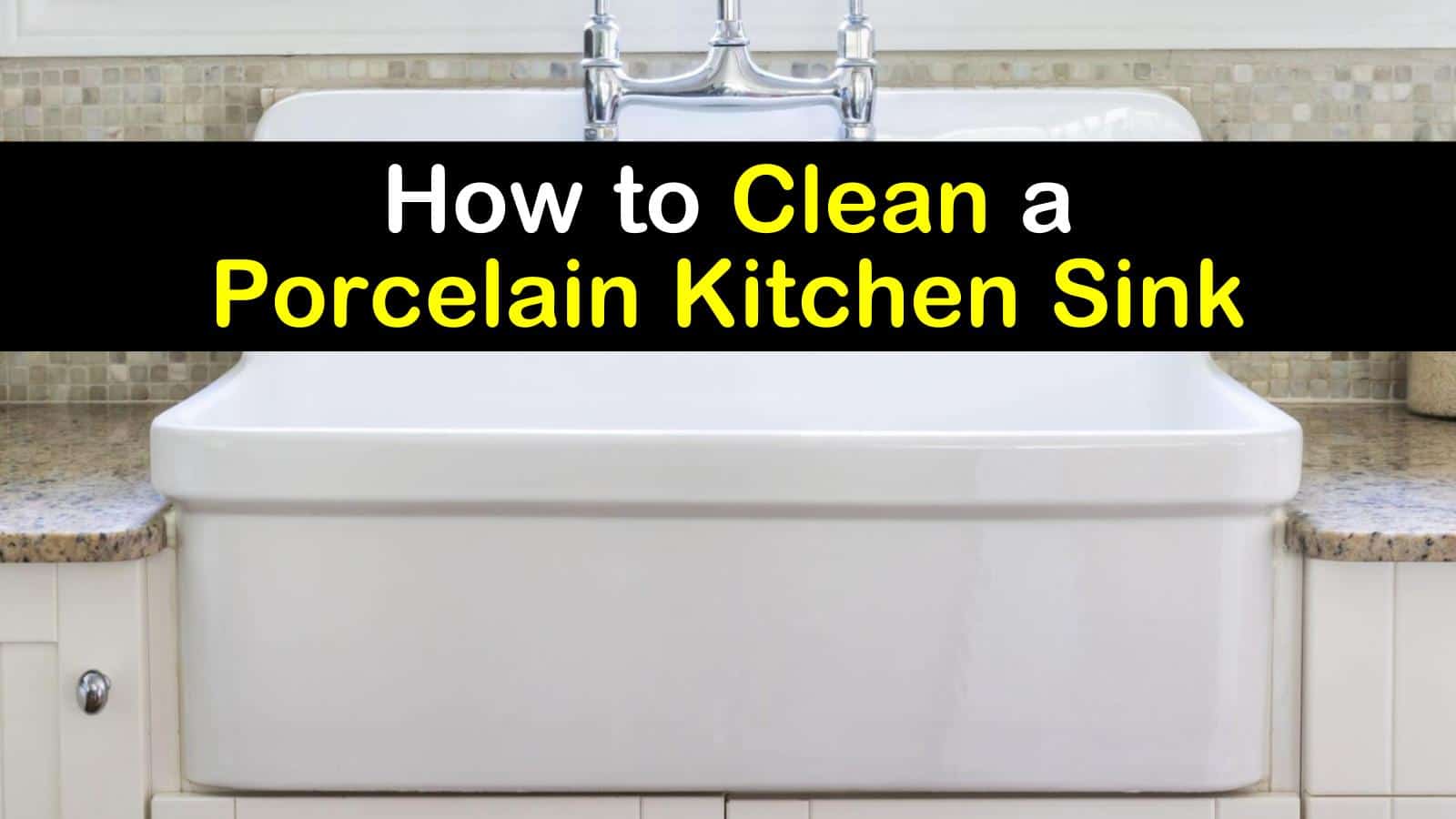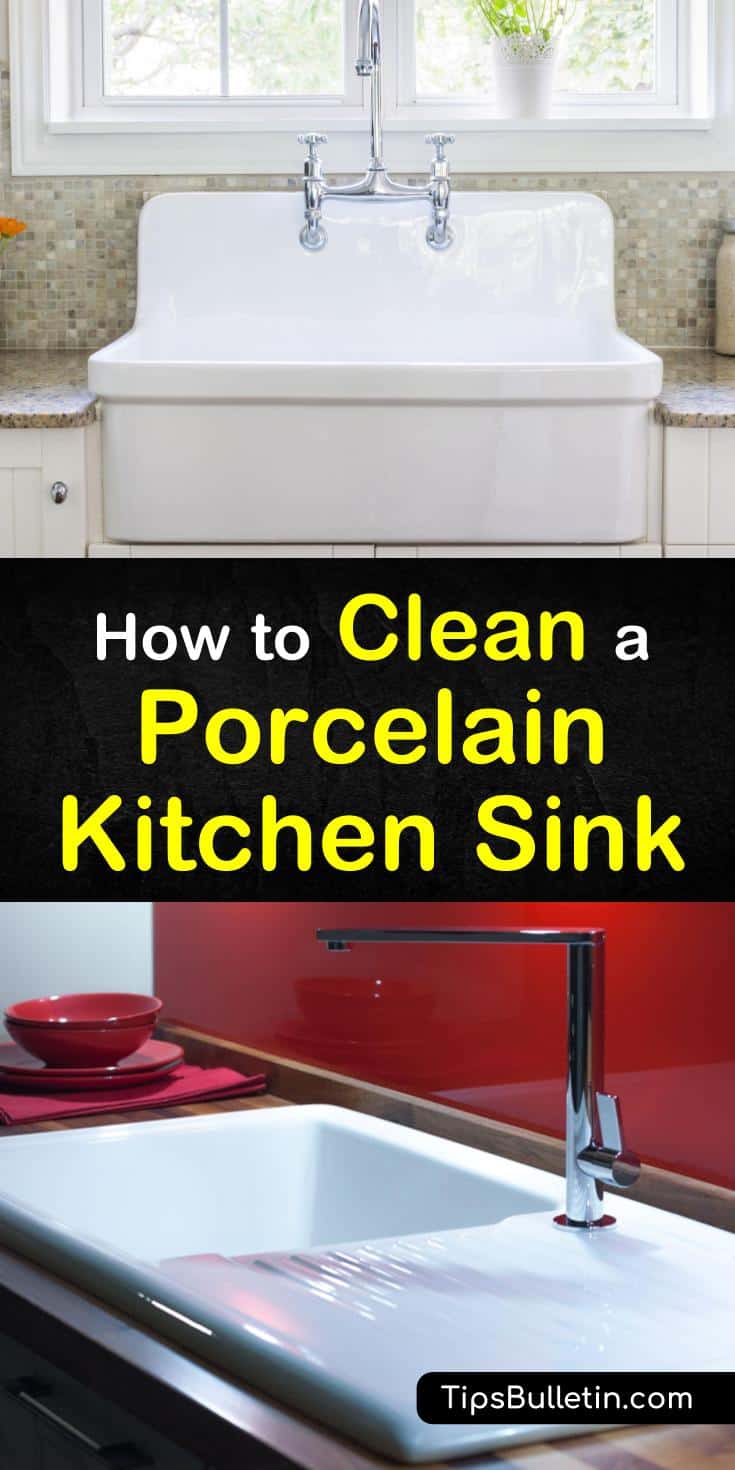Porcelain sinks, tubs, and basins are beautiful additions to any home. However, they require a bit more knowledge in the way of upkeep and stain removal than some other sinks. It’s vital to know how to clean a porcelain kitchen sink if you want to keep it looking clean and stain-free, especially if it’s white!
In this guide, we’ll teach you several of the best tips and tricks for how to clean a porcelain kitchen sink. Many of these tips and tricks will be suitable for other porcelain surfaces, and some of them will help you clean other surface and sink types, too! If you know how to clean a porcelain kitchen sink and keep it sparkling, it will serve your home with beauty and durability for years to come.
Porcelain sinks are a particular case because they require special care. A hard impact with a porcelain sink or basin can shatter it, for example, and you don’t want to damage its shiny, beautiful finish, either. We recommend using DIY, low-impact cleaners on your bathroom sink to keep it spotless, and we will teach you the best ones to use in this guide.

Cleaning a Porcelain Kitchen Sink
For all of the cleaning strategies we discuss, we advise going over your porcelain sink with mild dishwashing soap, hot water, and a damp sponge, just like you would use when you clean a granite sink.
Use dish soap to prep your basin and get any light stains, greasy residue, and food build-up out of the way. Once that’s done, you’re ready to get started!
As a side note, we recommend using abrasive and acidic cleaners with caution as a way to clean a kitchen sink made from porcelain.

Magic Erasers, for example, while useful for many different types of surfaces within the home, can damage the finish on your porcelain sink when used repeatedly over time. Use acidic or abrasive cleansers sparingly and carefully!
If you notice that your drain is going a bit slowly while you’re cleaning the sink, it may be a good time to use a DIY drain cleaner to take care of the issue while you’re in the sink anyway. Some boiling water, vinegar, and baking soda should be all that you need.
Our recipes are also ideal for cleaning porcelain tile floors, backsplashes, and countertops, too. Get stubborn dirt and scuffs off your flooring and remove a variety of stains with one of our simple solutions.
Buffing Minor Stains and Scuffs with Baking Soda
Baking soda is an ideal all-around cleaner and mild abrasive that is appropriate to use on a variety of surfaces throughout your home. It’s strong enough to get most stains and residue out of a porcelain sink, but gentle enough not to damage the porcelain enamel. Deep clean a porcelain sink with baking soda and you’ll likely never use another product again.
To clean porcelain sink, start by wetting your sink thoroughly with your sponge or cloth. Then, sprinkle baking soda on any of the problem areas in the basin. Scrub the baking soda into these areas gently with a circular motion – no need for elbow grease here.
Alternatively, one of the easiest DIY kitchen sink cleaner products you can make is a paste of one part baking soda and one part water. Scrub that into any stained areas. Make sure to rinse all baking soda residue off of your sink thoroughly when you finish, as any leftovers leave a hazy residue and a dull finish.
To boost the already amazing stain-fighting power of baking soda, add a little ammonia, white vinegar, hydrogen peroxide, or lemon juice to it for a stronger effect. This should take care of any stain you may have in the sink, from hair dye to ink.
If you have a stainless steel sink to wash, baking soda and water, with the help of a little vinegar, also makes an excellent stainless sink cleaner. Baking soda is gentle enough to use on cast iron sinks, too.
Cleaning a White Porcelain Kitchen Sink with Bleach
As you probably know, bleach is an amazingly powerful cleaning compound, but it works best on white surfaces – that’s why it’s best for cleaning a white porcelain kitchen sink only. Some coatings can suffer damage from bleach, but fortunately, porcelain is not one of them. However, don’t use bleach on any porcelain surface that isn’t white, as it can damage the color.
For white kitchen sink cleaning with bleach, douse your porcelain sink in enough bleach to cover all stained or dirty surfaces. It may be easier to use a spray-on bleach cleaner instead of liquid bleach so you don’t accidentally get any on the surrounding surfaces. Then, lay paper towels over all the wet areas and let them sit overnight.
The next morning, carefully remove the paper towels and rinse any remaining bleach away. Be sure to go over the entire sink to ensure that all traces of bleach are gone. Predictably, this approach is excellent for eliminating discolorations from white porcelain sinks only.
Clean Watermarks with White Vinegar
White vinegar is another versatile household cleaner. It works exceptionally well as a homemade kitchen counter cleaner, too. While it’s suitable for cleaning and sanitizing your whole sink, it works nicely on hard water stains and soap scum.
For a simple homemade kitchen sink cleaning solution, fill your sink with hot water, stop the drain, and add about ½ cup of white vinegar to the water. Leave this vinegar and water mixture in the sink for three to four hours, then let the mixture drain. Most stains should come away quickly with a soft scrub.
However, be extra careful to thoroughly wash any vinegar from your porcelain sink and faucet when you finish, as its acidity can damage it if left to sit for too long. White vinegar is an excellent compound for cleaning and sanitizing your dishwasher, also.
Tackle Rust Stains with Lemon Juice and Borax
Rust stains can be some of the most frustrating to tackle on and around your porcelain sink. Fortunately, as long as you’re careful, you should be able to get those stains out with some gentle lemon juice and some Borax. This homemade porcelain cleaner can be used on multiple surfaces, not just porcelain, to get out the worst stains.
Make a thick paste out of Borax and lemon juice, then rub the paste into any sink stains with a soft sponge or cloth. You can leave it to sit for a few minutes if you need to, but be careful that you don’t leave it for too long, as lemon juice is acidic and can damage the porcelain if left on the surface.
Borax and lemon juice are even tough enough together to tackle stubborn rust stains with ease. Finish things off by rinsing the paste away with warm water, and any remaining stains should lift away easily.
Tackle the Worst Stains with Bar Keepers Friend
Bar Keepers Friend is one of the best-kept secrets when it comes to home cleaning. While it’s not a DIY cleaner, it’s gentle but still powerful enough to get the worst stains out of your sparkling white porcelain sinks, as well as a multitude of other home surfaces.
To get stains out of porcelain sink, apply the cleanser to the stained areas, scrub gently with a sponge, then wash away all the residue. Always make sure to follow the manufacturer’s directions to ensure that you maintain the integrity of your sinks.
Refinishing Porcelain Kitchen Sinks After Cleaning
Once you’ve finished cleaning any stains and scuffs, you may want to think about refinishing porcelain kitchen sinks. An excellent, durable finish on your basin or tub will keep it shinier, stronger, and less prone to stains and residues in the future. It’s possible to do this yourself with some simple store-bought products, but you can always hire a professional, too.

If you liked our guide on cleaning porcelain sinks, be sure to share these cleaning tips and tricks on how to clean a porcelain kitchen sink with your acquaintances on Facebook and Pinterest so they can benefit, too!